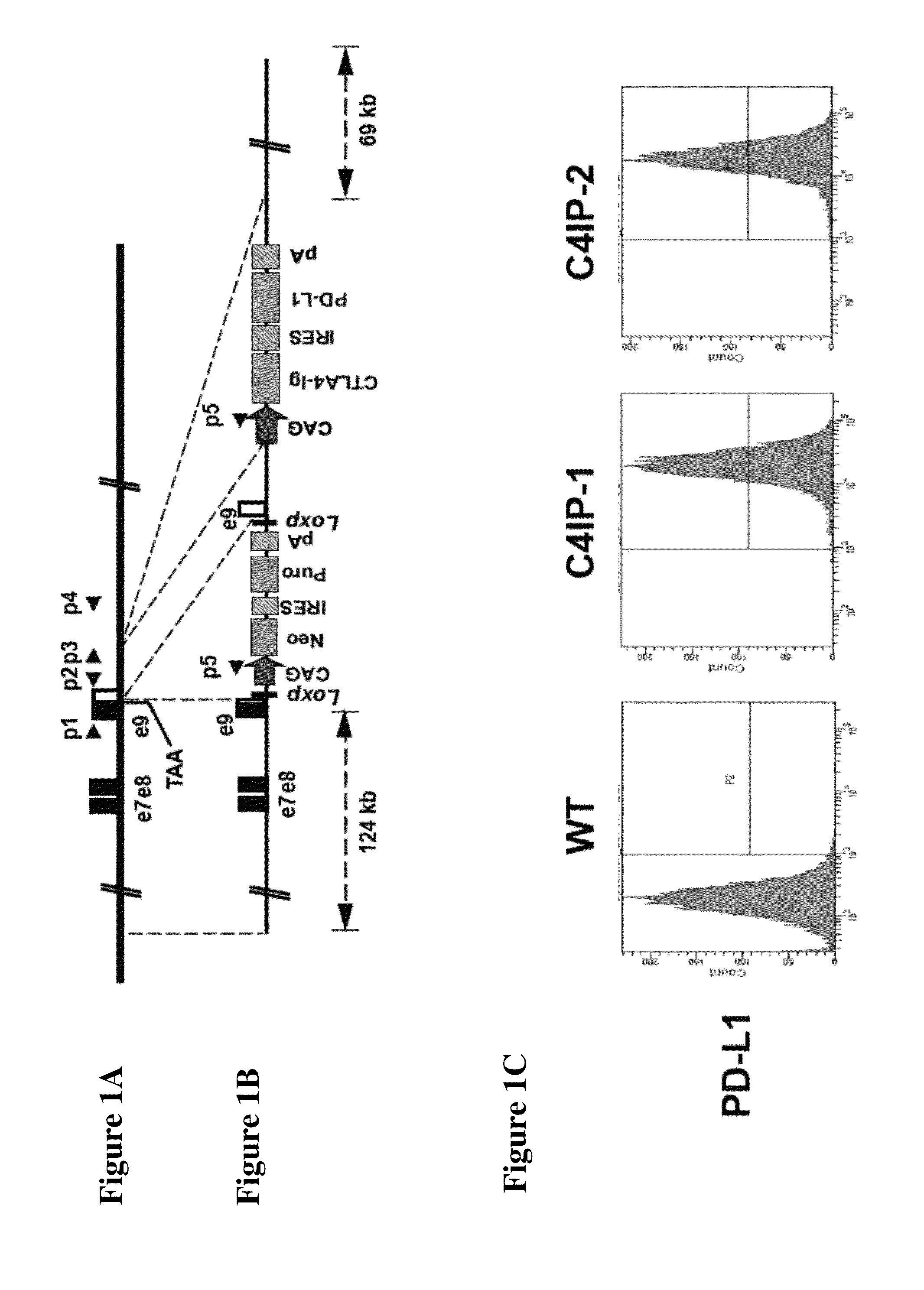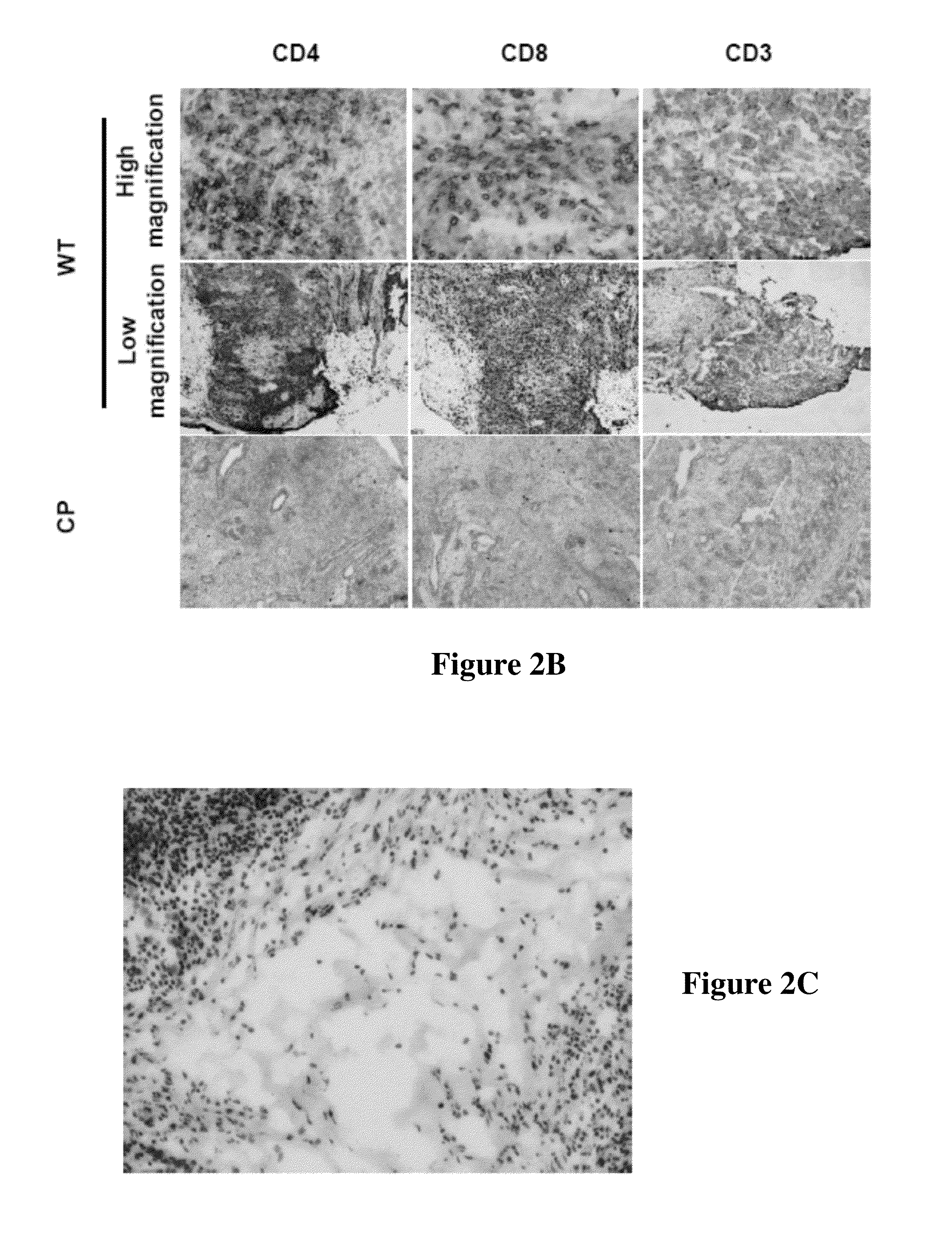Compositions and methods for preventing allogeneic immune rejection
- Summary
- Abstract
- Description
- Claims
- Application Information
AI Technical Summary
Benefits of technology
Problems solved by technology
Method used
Image
Examples
example 1
Construction of BAC-Based Targeting Vector
[0113]The HPRT1 BAC clone RP11-671P4 was purchased from Invitrogen and the targeting vector was constructed by recombineering as previously described (Rong et al., (2012) A scalable approach to prevent teratoma formation of human embryonic stem cells. Journal of Biological Chemistry 287:32338-32345; Song et al., (2010) Modeling Disease in Human ESCs Using an Efficient BAC-Based Homologous Recombination System. Cell Stem Cell 6, 80-89). Briefly, the pCAG / CTLA4-Ig / IRES / PD-L1 / polyA expression cassette was inserted 600 bp downstream of the HPRT1 stop codon. The Loxp-flanked selection cassette pCAG / Neo / IRES / Puro / polyA was inserted between the HPRT1 stop codon and its endogenous polyA site. The Cre-mediated deletion of the selection cassette will restore the normal expression of HPRT.
[0114]Cell Culture—
[0115]The hESC lines, HUES-3 and HUES-8, were cultured on mouse embryonic fibroblast feeder layer in Knockout Dulbecco's modified Eagle's medium (D...
example 2
Preventing Allogeneic Rejection of hESC-Derived Cells or Other Allogeneic Cells by Genetic Modification
[0132]As described herein, hESCs will be obtained and transfected with a vector encoding CTLA4-Ig and PD-L1. The progeny of such transfected hESCs will therefore express CTLA4-Ig and PD-L1, thereby preventing allogeneic rejection of the cells upon administration to a human subject. The genetically modified hESC-derived cells will then be administered to a subject in need thereof.
example 3
Preventing Allogeneic Rejection of hESC-Derived Cells by Protein Administration
[0133]As described herein, allogeneic rejection of administered hESC-derived cells will be avoided by co-administering the hESC-derived cells with CTLA4-Ig and membrane-bound PD-L1 to a human subject.
[0134]Although the invention has been described with reference to the above example, it will be understood that modifications and variations are encompassed within the spirit and scope of the invention. This application is intended to cover any variations, uses, or adaptations of the disclosure following, in general, the disclosed principles and including such departures from the disclosure as come within known or customary practice within the art to which the disclosure pertains and as may be applied to the essential features hereinbefore set forth. Accordingly, the invention is limited only by the following claims.
PUM
 Login to View More
Login to View More Abstract
Description
Claims
Application Information
 Login to View More
Login to View More - R&D
- Intellectual Property
- Life Sciences
- Materials
- Tech Scout
- Unparalleled Data Quality
- Higher Quality Content
- 60% Fewer Hallucinations
Browse by: Latest US Patents, China's latest patents, Technical Efficacy Thesaurus, Application Domain, Technology Topic, Popular Technical Reports.
© 2025 PatSnap. All rights reserved.Legal|Privacy policy|Modern Slavery Act Transparency Statement|Sitemap|About US| Contact US: help@patsnap.com



